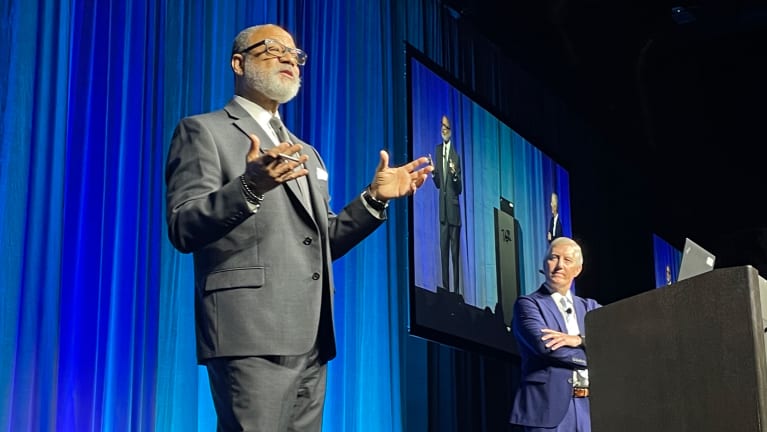

?Sitting down with employees to discuss performance problems, workplace conflicts, attendance issues and other complaints can be difficult. These conversations are often a source of dread for all parties involved.
But taking time to prepare, craft and deliver your message—and listening more than talking—can lead to more effective conversations, according to Joseph L. Beachboard and Dennis Alan Davis, speaking at the SHRM Annual Conference & Expo 2023 in Las Vegas.
“Effective communications is a process. … It’s a way to help the recipient understand the intended message,” Davis reminded attendees during the June 12 concurrent session, “Making Difficult Conversations Less Difficult: Best Practices and Strategies.”
Davis is director of client training at Ogletree Deakins in San Diego, while Beachboard is an employment lawyer at Beachboard Consulting Group in Los Angeles. The co-presenters shared the following tips to effectively communicate during difficult conversations:
Prepare your message:
- Prior to the conversation, review the employee’s profile to determine whether the individual’s circumstances might negatively impact how they receive or interpret your message.
- Consider factors such as the employee’s tenure or workplace issues that might be affecting the individual’s behavior, such as seeing co-workers laid off or personal circumstances such as a new baby in the household.
- Review all potentially relevant laws protecting the employee; they may be living in a jurisdiction where the laws are different for the situation at hand.
- Consider the timing and any unresolved issues. Will this take place at a time that is close to a culturally significant date, season or event? Are there unresolved discrimination or harassment claims or complaints at the time you plan to meet? For example, what did you, as the manager, do about a complaint the employee had brought to your attention?
- Consider potential barriers such as noise, long hours or scheduling issues that may make it hard for the employee to concentrate on what you want to communicate.
Craft your message:
- Be appropriately transparent, communicating what you can legally and responsibly share on the topic under discussion.
- Be as precise as possible. Avoid terms with multiple or unclear meanings and scrub them of biased, cliched and stereotypical statements or comments.
- Before your meeting with the individual or group, review with a peer, HR representative or someone else you trust what you intend to say and how you plan to say it. Asking for feedback from someone who is culturally different from you can help reveal blind spots in the message you plan to deliver.
- Consider your communication method. Davis and Broadbeach discouraged using the phone, email and texts for difficult communications. In-person conversation is best, followed by a talk over a video platform so you can see one another’s facial and body language. That way, the message is less likely to be misinterpreted, Davis said.
Deliver your message:
- Determine the best people to meet with the employee.
“You don’t have to find someone who shares one demographic trait with the employee,” Davis said, noting it’s not uncommon for employers to recruit the lone woman or Black employee in the department or division to have the heart-to-heart talk with the other employee. “That might not be the best messenger.”
And avoid crowding the meeting with individuals representing the organization’s hierarchy. Do you really need to have three levels of management in the meeting? That can be intimidating for the employee.
- Be aware of your body language. Do you appear open, or are your arms crossed? Are you facing the employee during the discussion? Follow the employee’s cues as to whether to make eye contact; social experiments have found, in general, eye contact is more important to women than men, Davis and Beachboard said.
- Stay calm and professional; make your messages short and concise; and deliver them in a way that validates, not demeans, the other person.
- Actively listen. Conversations are a two-way street. Employees should have the opportunity to appropriately express their disagreement, concerns or emotions.
“Everyone wants to be heard,” Beachboard said. “A lot of the lawsuits we see get filed are not necessarily over money—and money is certainly a part of it—but the individual usually brings a complaint because they feel like they have not been heard at their place of employment.”
- Focus on communicating information, not persuading, which is different.
When having difficult communications, the speakers advised, lead with things the employee does well, offer potential solutions to the issue being discussed, be prepared to have follow-up conversations, and reinforce the consequences of the behavior under discussion.
Other SHRM Resources:
Leading Difficult Conversations About Layoffs, SHRM Online, January 2023
How to Handle Difficult Conversations, SHRM Online, March 2020
Tough Work Conversations Can Send People Running for Cover, SHRM Online, October 2019

